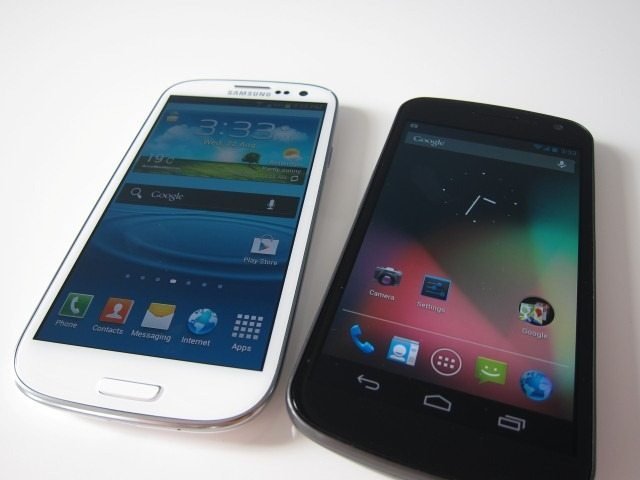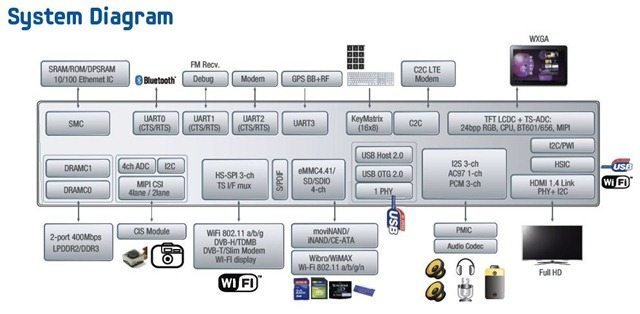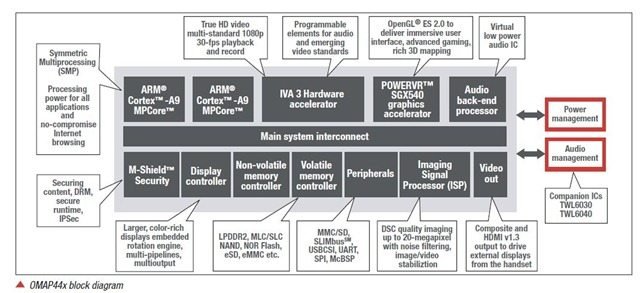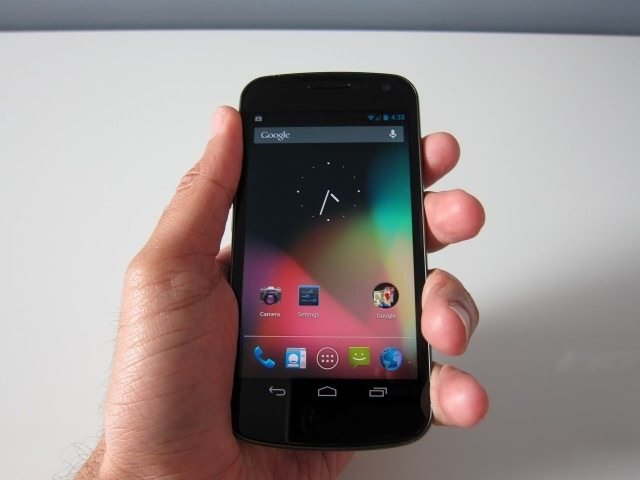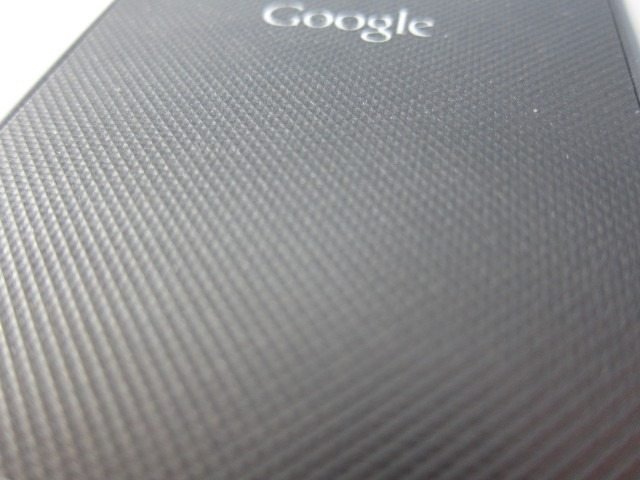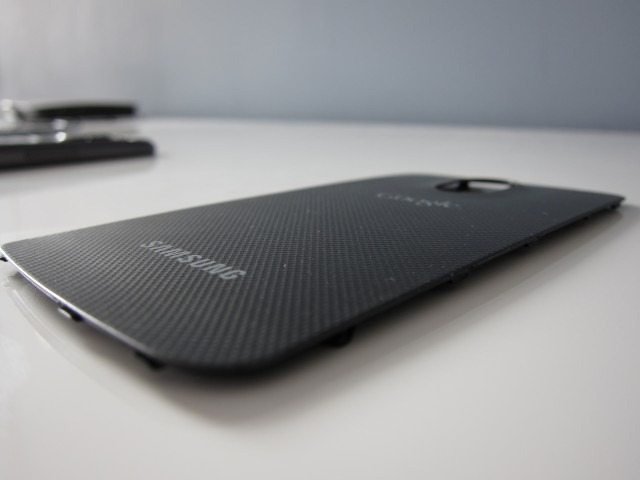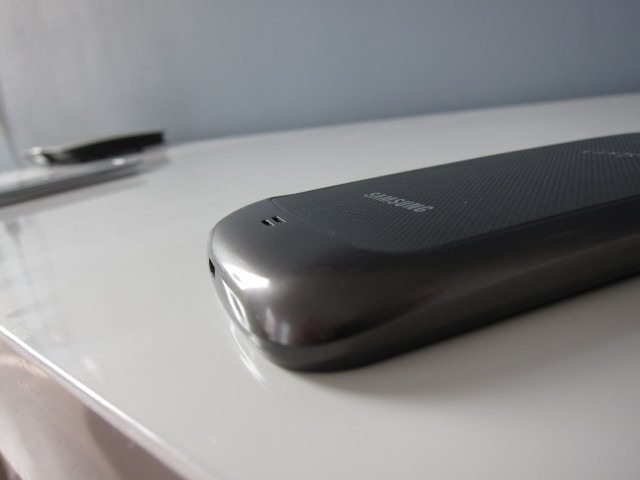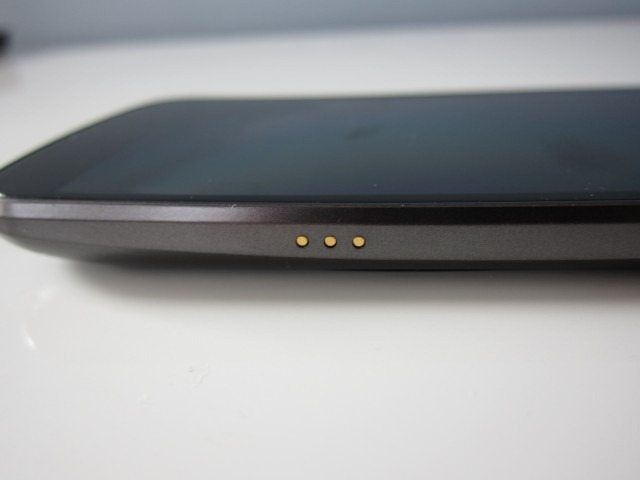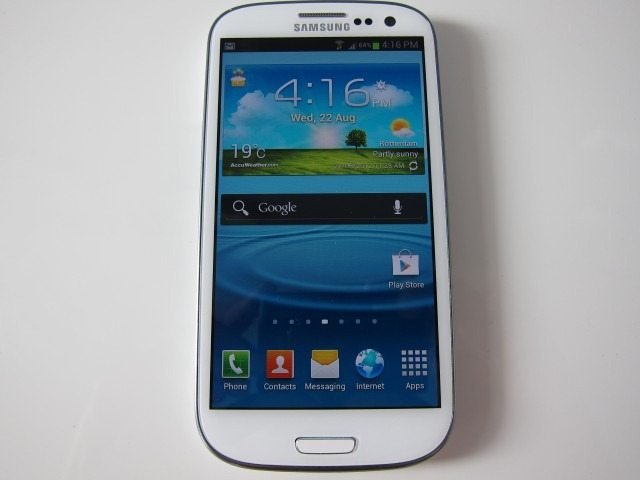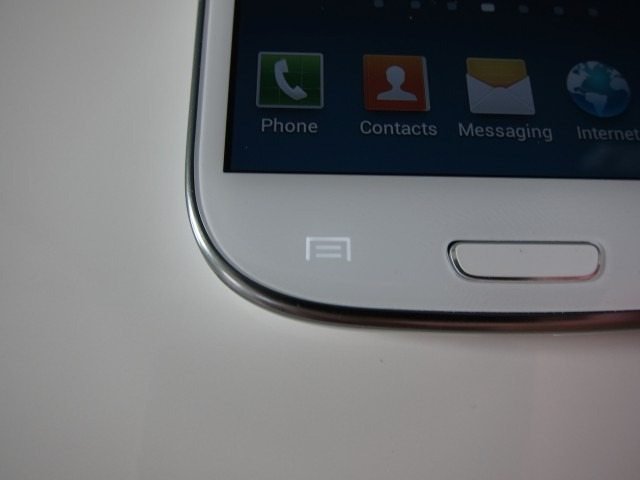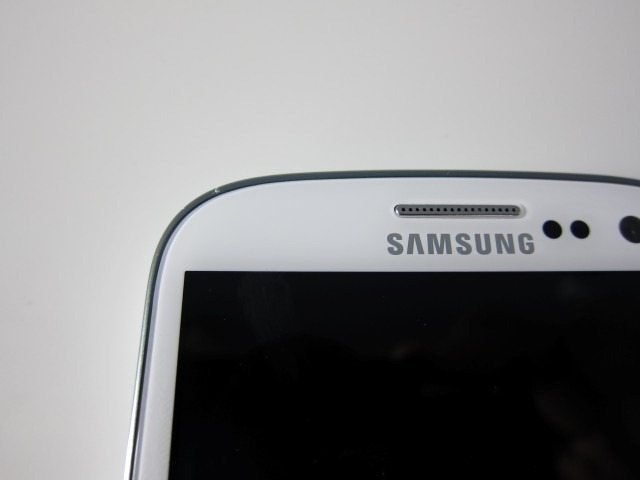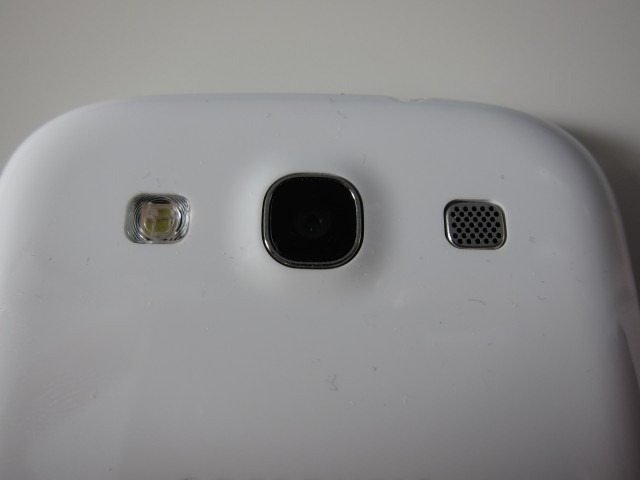Introduction
What do you do when you essentially have two of the best Android devices available on the market today? Review them of course, putting the two against each other in one mega review to see which device comes out on top. With devices of this caliber, the end decision will come down to the finer details and that’s exactly where we’re going. On one hand we have the HSPA+ version of the Galaxy Nexus, with its promise of a pure Android experience and among the first devices to get the latest Android updates from Mountain view, making it one definite stand-out device as the Google phone. At the other end of the ring we have the Galaxy SIII with enough horsepower and a feature list that could make any smartphone green with envy. It’s been a year since the Galaxy Nexus’ release, making its specs not as cutting edge as they were in 2011. The SIII’s Nature UX might have some handy enhancements, but that guarantees that you won’t be among the first to get the latest Android release and not everyone is a fan of the UI.
In this battle of titans what device will reign supreme and why should you consider the second place winner? We’re not going to tell you the answers in this introduction. You’ll just need the review and find out for yourself.
Specification
The Google Galaxy Nexus and Samsung Galaxy S III
The Galaxy Nexus and the Galaxy S III are two very different devices with very different philosophies behind them, yet they are a closer to each than you might think. The “Galaxy” in each name is a giveaway to how they are related: both are made by Samsung and part of or in the case of Nexus partially influenced by the Galaxy line of Android-based devices. The S III has its roots in their former flagship “Galaxy S” line which has now been pushed a step down by their Note devices, while the Galaxy Nexus (as well as the Nexus S) are co-creations between Google and Samsung which clearly have been inspired by the Galaxy S line. For this reason, it’s no surprise to find many similarities in features and especially design, hardware and materials.
But that’s where the similarities end. The philosophy behind each device makes them very different. The Nexus on one hand is a creation of not just Samsung, but also Google. Since the inception of the Nexus line Google creates a device in co-operation with one hardware manufacturer to produce a device that not only offers pure Android, but sets an example if you will for other manufacturer to follow or exceed and are the first devices to get latest version of Android. It’s exactly due to this partnership we have some specific choices when it comes to hardware and software: think the lack of a microSD slot or vanilla Android. If it were up to Samsung alone, things would have been executed quite different.
Samsung’s latest Galaxy S III is a testament to just how different they do things when they don’t have to report to Mountain View. This successor to the extremely popular S II, eschews vanilla Android for Samsung Touchwiz UI, which in its latest iteration was apparently inspired by nature and is now called TouchWiz Nature UX. Nature UX also seems to take the laws of natural selection quite literal, by improving or completely replacing certain parts of Android, which in most cases is a good thing, making it even more functional. In certain areas, like ICS and Jelly Bean’s characteristic look, aesthetically speaking, pure Android clearly wins. Don’t get us wrong, we simply love Nature UX, but we’re clear advocates of giving the consumer the choice. Samsung could have the perfect device here if they could ship future devices with Touchwiz and somewhere baked-in have vanilla Android and with a simple reset allow you to switch among the two. The Nexus in contrast has no choice but to offer pure Android because that it’s raison d’être and when you buy it, you know exactly why you want it and what you’re getting. If you’ve used Touchwiz for a while, there are certain functional improvements that you’ll definitely miss when using pure Android.
(Image: http://www.hardkernel.com)
The S III comes in different flavors, we’re reviewing the international GT-I9300 HSPA+ version, which comes in 16 or 32GB, with a 64GB version planned for the end of the year. The international S III uses Samsung’s own 1.4 GHz Quad Core Cortex A9 Exynos 4412 SoC, Mali-400 MP GPU with the now standard 1GB of RAM. US, Canadian and Japanese versions of the S III vary due the use of a mix of either DC-HSPA+ or LTE. But the biggest difference is the use of the 1.5 GHz dual-core Qualcomm Krait CPU and Adreno 225 GPU on their Snapdragon S4 MSM8960 SoC instead of the quad core Exynos. The Qualcomm-based devices also uses a whopping 2GB of RAM, something we’ve seen on just a few devices like the LG Optimus LTE2 and the Galaxy Note 10.1. We’re suspecting the 2GB of RAM was added to the Snapdragon SoC to close the performance gap between it and the quad core Exynos and help with the higher requirements of the faster LTE. Now don’t be fooled by the fact that the Qualcomm CPU uses “just” a dual core processor, benchmarks clearly show that in combination with its 2GB of RAM it’s able to match the quad core Exynos’ performance. Basically they’re both really fast! As for colors, there’s the popular Marble White and Pebble Blue and we expect an additional color variant or two. There already are reports of carrier specific colors like a Black S III for T-Mobile and AT&T’s Garnet Red version. Lastly there’s also a South Korean version which seems to be a hybrid between the international and Qualcomm-based S III, sporting a quad core Exynos, 2GB of RAM and 4G LTE. With prices starting just below $600 for an unlocked S III, it’s probably one of the most expensive smartphones on the market today.
This review also focuses on the HSPA+ version of the Galaxy Nexus which only comes in 16GB with 1GB of RAM, while it’s 32GB versions seems to have been axed for good. With the lack of a microSD slot, 16GB of storage is a bit on the low side, but is balanced a bit by many of Google’s own cloud services. There’s an LTE version which does come with 32GB of storage, a larger battery (1850mAh instead of 1750 mAh), it’s also slightly thicker (9.47mm vs 8.94mm) and slightly heavier (145.5 g instead of 135 g). Both uses a fast, but a not so cutting dual-core 1.2 GHz TI OMAP 4460 processor ARM Cortex-A9 with a PowerVR SGX540 GPU. Unlike the ultra-expensive S III, the Nexus is sold directly unlocked by Google at an incredible $350 dollar price, making it the best deal in the mobile industry. The Galaxy is primarily available in Titanium Silver, while a White version with just a White back seems to have been produced in limited quantities and is very hard to find.
Design & Hardware
When you first put the S III next to the Nexus you’ll immediately notice the resemblance, with the Nexus looking like a slightly shrunken down and button-less S III. This didn’t happen by accident of course as Samsung makes both devices. They started a new design language with the Galaxy Nexus and it had enough of a impact that even one year later it’s influencing the design of the S III and recently announced devices like the Galaxy S Duos, although the “inspired by nature” stuff seems to be recent.
The Nexus line has always been about devices with rounded edges, so it’s no surprise that the Galaxy Nexus follows in the footsteps of its predecessors.
In contrast, the Galaxy S line so far has seen devices with a fairly square profile, making the S III with its extremely rounded corners a major departure from what we’ve seen so far.
When seen from the from the front, the likeness is definitely there, sharing not only the rounded edges, but also the exact same earpiece design, front camera, proximity/ambient light sensor placement and even the similar idea of a metallic edge surrounding the screen. The two devices also have the same power button and volume controls, all placed at the exact same locations. In typical Samsung fashion plastic is the new metal with both devices sharing an all-plastic body.
However don’t let the plastic fool. Samsung has mastered the use of this material where it’s able to make some extremely well-built devices to the point where the metal versus plastic argument has been put out the window. Both devices, especially the S III, are a showcase of what can be achieved with plastics. When somebody says that metal-based devices are better build, they clearly haven’t seen the current devices like the HTC One X, Nokia Lumia 800 and now the Galaxy S III.
When seen from the side, both the Nexus and S III have lines that slightly curve up giving the impression of a curved screen. This is a very characteristic design element that was shown in the Nexus teaser video. But unlike the Galaxy Nexus, the S III doesn’t have a curved glass screen.
Despite the strong resemblance, a closer inspection reveals two very different devices. The Nexus’ completely black front is designed to take a back seat if you will and make the screen and UI stand out. What’s happening on-screen should be the center of focus and not necessarily the device itself. This is further aided by the completely buttonless front, instead opting for onscreen soft buttons. Overall the Nexus looks very understated, yet artificially mechanical and masculine. According to Vice President Minhyouk Lee of the Product Design Team at Samsung, The S III has a simplified design known as “minimal organic” and a design concept they call “inspired by nature.” This comes down to a device where all complexities are removed and only the essence remains, while the design is also characterized by curves, lacking any artificial straight line. This is very evident when you first see the S III in person: it’s exudes an almost organic, pebble-like feel, with a very simplistic, soft feminine design. When see from any angle other than in front, it creates a very strong illusion of a curved display.
Let’s take a closer look at the Nexus. As mentioned above, it sports a completely buttonless front, instead opting for on-screen buttons, an idea first introduced by Google on Honeycomb-based Android tablets. Despite having a 4.65” screen, the useable space is more around 4.3” since a strip at the bottom is reserved for the virtual buttons. The screen doesn’t use Gorilla Glass, but it is an unbranded fortified glass which should be enough to protect the screen against keys and making screen protectors a thing of the past. We simply love the idea of virtual buttons, especially because they’re aesthetically pleasing and are context sensitive. When watching videos for examples they nicely disappear and luckily giving you the full 4.65 inches of screen real-estate. Speaking of the screen, they’ve crammed quite a lot of pixels in a relatively small space with a resolution of 1280×720 using their HD Super AMOLED PenTile display. There’s been a lot of criticism towards PenTile displays, but believe us when we tell you that the screen on the Nexus is simply gorgeous and with such a s high resolution, it’s simply a treat to the eyes. It however has to bow down for the screen on the S III, which is step or two above it. If we could change on thing about the screen is simply making it bigger, we feel for a current high-end device 4.8” seems to be close to the ideal.
On top we find the earpiece and to the right of it the front camera and proximity/ambient light sensor. The camera uses a 1.3 megapixel sensor and while’s there’s been a recent march towards 2 megapixel front cameras, 1.3 megapixels and 720 video recording at 30 fps is more than enough.
A welcome addition is the notification LED which has been missing on many Android devices. The light is RGB and as a result is capable of displaying an almost endless array of colors out of the RGB mix. The light is handy, but vanilla Android is a bit low on in-software customizations allowing you to only turn notification On or Off. This is something you can always customize with third party apps, but we just wish it had more functionality baked in.
Turning the device around we find the now famous Hyperskin used on the extremely thin and flexible battery cover, a fancy word for a textured and extremely grippy piece of plastic used on the Nexus. When we say this material is grippy we really mean it. Unlike the slippery S III, this material feels very comfortable and gives the reassuring feel that the device won’t suddenly glide out of year hand like the stick of butter that is the S III. The Hyperskin should also hide smudges a lot better and should be difficult to scratch. Just be aware that it’s used for about 75% of the back.
The rest of the back has a smooth Titanium look that will likely scratch a lot easier. The Titanium-like plastic that surrounds the Hyperskin wraps around the curvaceous screen and bulges out near the back. I really had to take a second and even a third to make sure that it wasn’t metal, showing the build quality, fit and finish Samsung is displaying with the Galaxy Nexus. The bulge on the back is perhaps a throwback to the Android of yesteryear where a front chin and a back hump were frequently seen design elements. It’s not only an interesting design element but also acts as a point where you can rest your fingers giving you even more grip.
We’ll talk about the back camera in the camera section, but for now it suffice to say that its incredibly fast, but not as good as good as similarly priced devices like the S II and is probably its weakest point. This is even truer in low light conditions. The camera and LED flash are all in one module and if it wasn’t enough to complain in every review, I’ll have to complain here too about the exposed camera lens. Samsung have simply failed in providing any form of protection for the lens in the form of a cover or slightly placing the lens deeper in the chassis. The speaker is placed in the back hump with the speaker opening near the top of the hump. This isn’t the best placement because putting the phone on a flat surface will completely cover the opening and block the sound from the already weak speaker output. Both Google and Samsung should consider adding more powerful stereo speakers and placing them in front, just like the ones we’ve seen on the Galaxy Tab 2 and Galaxy Note 10.1. I know a lot of people that use their devices for Podcasts and such a weak speaker is just not going to cut it.
On the left we find the volume rocker and on the right the power/lock button and 3 gold contacts. Two of these contacts are for charging while docked and one is a trigger for the dock mode. The placement for both the volume rocker and power button are perfect.
The 3.5mm headphone jack deserves a special mention as it’s placed at THE bottom of the device instead of the traditional top placement. It will take some getting used to, but it has the advantage of not having a cable potentially resting on the screen and getting in the way. It’s not that huge of a difference and we don’t consider either placement a major plus over the other. At the bottom you’ll also find the microUSB 2.0 port which doubles as an MHL cable port. As for USB connections, the Nexus doesn’t use USB mass storage, but relies on MTP. For Windows users, in practice, this won’t mean much of a difference, but Mac owners will require downloading an extra software called the Android File Transfer. Strangely missing is a microSD slot for added storage. If you love having tons of movies or MP3s on your device, the 16GB might not be enough and the lack of a microSD slot has to be the device’s biggest con. This shouldn’t be a problem of you use Google cloud services and constantly on WiFi, but for those of us without an unlimited data plan, this will pose a huge problem. The 1750 mAh battery should be enough for most users with low to moderate use.
Switching over to the S III, we have a noticeably larger 4.8” HD Super AMOLED 1280×720-pixel screen. And yes, again we’re talking about a PenTile matrix, display and just like the Nexus display there’s nothing to worry about here. It’s one gorgeous screen and probably one of the best I’ve ever seen. It’s also safe to say that it will effortlessly beat the display on the Nexus, all while managing to be highly visible outdoor in even the most bright conditions. The screen uses Gorilla Glass 2, making screen protectors unnecessary. Samsung’s Touchwiz Nature UX also helps here with its bright, vibrant color palette. Pure Android uses a distinctly dark look which should help with battery life, but makes things less visible outdoors.
Below the screen is Samsung’s trademark home screen button. To the left and right of the home button we have the menu and back buttons respectively. The S III has the ideal height and width making the 4.8” screen close to the perfect screen size. It’s close because we can imagine them stretching the screen even more in a design that almost lacks a bezel.
On top we find the earpiece and to the right of it the front camera and proximity/ambient light sensor. The camera uses a 1.9 megapixel which is one of the highest I’ve seen so far. It’s incredibly good when it comes to both pictures and videos, something I’ve rarely said about a front camera, but more on this in the camera section. To the left of the earpiece we find the LED light sitting behind the White plastic. Just like the Nexus it’s RGB and is able to shows a wide array of colors by mixing Red, Green and Blue. The notification light just like the Back and Menu button sits behind the White plastic and completely disappear when off, giving the S III a completely clean and simple look we like a lot. But when they do light up, the overall look is a bit on the cheap side due to fact that the light bleeds beyond the borders of the button icons or the round shape of the LED light. This effect, whether it was intended or not, does take away from the overall quality feel of the S III. Special attention has to be given to the home button: it’s just the right size and doesn’t stick out where it starts to hurt your finger. While soft or capacitive buttons look good and are all the rage, we still prefer having a dedicated physical button for the home bkey and we salute Samsung for sticking to the good ol’ and trusty physical button.
Surrounding screen bezel is a plastic rim in a faux metallic finish. The result is very convincing with a brushed metallic look that gets quite close to the real thing. Just like the Galaxy Nexus we find the power/lock button on the right and the volume rocker on the left.
The USB port on the bottom is also used as an MHL connection for HDMI connections, while it’s also USB-On-The-Go compatible. Unlike the Nexus, the 3.5mm headphone jack is placed at the top. If you’re an audiophile I suggest you take a close look at the international version of the S III which uses Wolfson’s digital-to-analog converter, the WM1811 HD Audio Hub which is known for excellent audio performance and clean output. The US version however uses Qualcomm’s own WCD9310 for audio. The S III with the Wolfson’s WM 1811 and a good pair of headphone should provide an excellent audio experience, without resorting to glorified equalizers like the one found on the HTC One X and it’s Beats Audio.
On the back we find the camera module, LED light and speaker grille.
The speaker is placed to the right of the camera lens. What has been said about Nexus applies here too: Samsung isn’t providing any form of protection for the lens a deep scratch from a key will surely have an effect on photos. They should consider using Gorilla Glass to protect the camera. What has been said about the speaker on the Nexus can also be said here.
While the speaker on the S III is certainly better than the one on the Nexus and performs pretty good, it’s placement is not. Putting the phone on a flat surface will completely cover the opening and block the sound dramatically. Again Samsung should consider using the front mounted dual speaker setup found on the Tab 2 and Note 10.1. While the Nexus uses a paper thin battery cover, the S III uses a single piece of Polycarbonate for the entire back. According to Samsung “ using three layers of high quality, pure and clear polycarbonate, not only is the phone’s aesthetic elevated, but the durability and scratch resistance is maximized”. This definitely can be backed by my experience with the device: it has a very glossy finish that does seem to be resistant to scratches and doesn’t finger prints as easily. It’s the use of a single piece of Polycarbonate that adds to overall rigid feeling of the device. This in combination with an incredible fit and finish, and the extremely small gaps between different panels and sections help in creating a device that feels extremely solid. There have been sturdy devices made from plastics like the Lumia 800 and HTC One X, but in those cases the entire device was made out of single piece of milled Polycarbonate. Considering the fact that S III is made out of different section and not from a single piece of plastic, is an achievement on a totally different level. Very impressive stuff. Despite the sturdy feel it does however feel a bit too light and plasticky. The three layers of clear Polycarbonate make it very scratch resistant, but also incredibly slippery. Add the fact that its super thin, you basically end with something like a wet bar of soap. Take our word for it: if you get an S III get a case if you don’t want to drop it, because you probably will.
The S III has a whopping 2100 mAh battery, making it one of the most capacious batteries on the market today, slightly behind the Galaxy Note, but still far from the Droid Razr Maxx. It’s safe to say that for even the most heavy phone users, the S III should provide plenty of juice. In a world where the iPhone, Galaxy Nexus and even the HTC One X lack a microSD, the S III stands out with its built-in microSD slot. I can’t stress enough how important this feature is: the fact that you have the flexibility of easily adding as much storage as you need for a reasonable price, makes this a feature Samsung should keep in the foreseeable future. Despite the plethora of features stuffed in the S III, the inclusion of a microSD slot still remains one of the most its important and basic feature. It’s also one important reason why it comes on top when compared to the equally impressive HTC One X. If you love storage, the S III is the device to go with and also one reason why it easily trumps the HTC One X. If that wasn’t enough they even include 48GB of storage on Dropbox for two years.
In part 2 of this review we’ll take a look at the features, camera and software!
A special thanks to our friends at Vodaphone the Netherlands. Be sure to check their site for the latest mobile devices!




